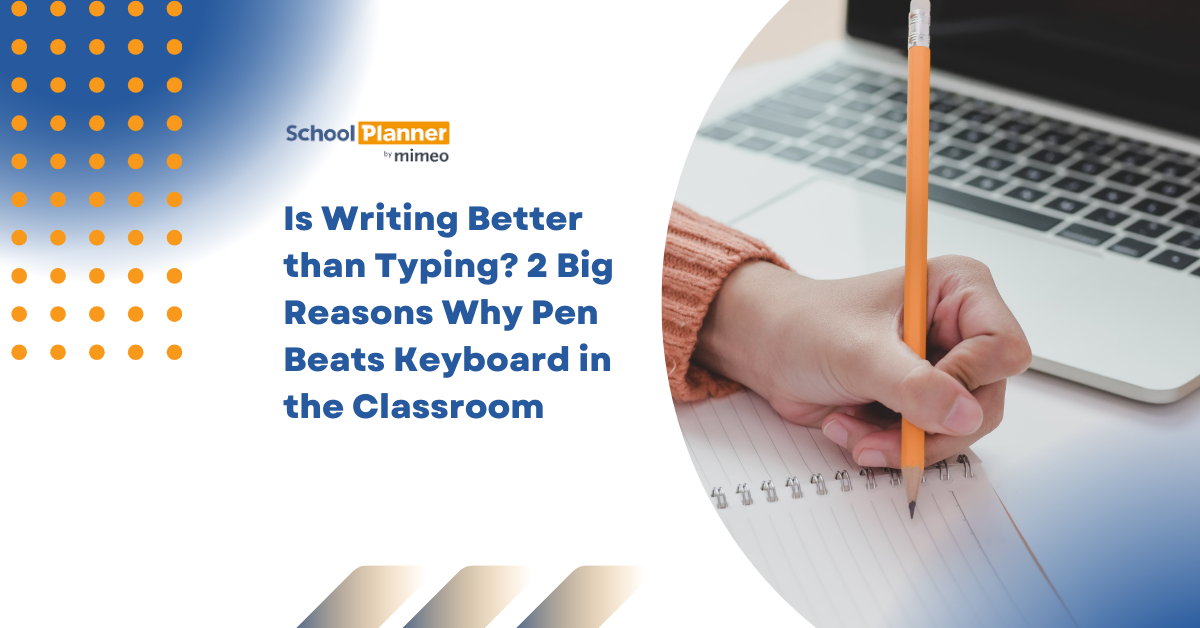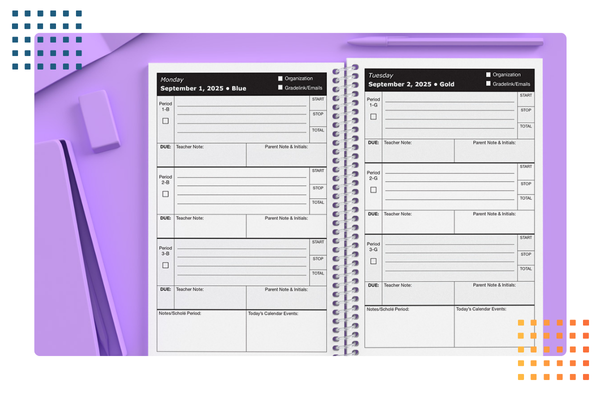When it comes to learning, research shows handwriting is better than typing because it fosters new neural pathways that help develop critical thinking skills. Writing can also improve retention, help you focus by preventing distractions, and can help you reach your goals.
In an age of Chromebooks, tablets, and lightning-fast typing, handwriting may seem like a fading art. But science tells a different story: writing by hand activates the brain in ways that typing simply doesn’t. In classrooms where learning and memory matter most, pen and paper are still powerful tools.

What Happens in the Brain When We Write?
When students write by hand, the brain engages in a multisensory experience: visual, motor, and cognitive processes all fire simultaneously. This creates stronger neural connections than typing, which tends to be a more mechanical, repetitive task.
Key Brain Benefits of Handwriting
- Enhanced memory encoding
- Stronger reading and writing fluency
- Improved comprehension and retention
- Boost in idea generation and creativity
Handwriting vs. Typing: Cognitive Effects
| Cognitive Function | Writing by Hand | Typing on Keyboard |
|---|---|---|
| Memory Retention | ✅ High | ⚠️ Moderate |
| Reading Comprehension | ✅ High | ⚠️ Moderate |
| Idea Generation | ✅ High | ⚠️ Medium |
| Speed & Efficiency | ⚠️ Slower | ✅ Faster |
| Neural Engagement | ✅ Full brain | ⚠️ Partial brain |
(Source: Journal of Educational Psychology, 2023)
1. Handwriting is better than typing for improved academic success outcomes.
Researchers have found that students who take notes by hand remember concepts better and perform better on tests than those who type notes verbatim. The act of summarizing ideas in your own words while writing slows you down—but that’s the point.
✨ “Writing by hand forces the brain to process information more deeply, which supports learning and retention,” says Dr. Audrey Van der Meer, neuropsychologist at NTNU in Norway.
Developmental Benefits for Young Learners
In early education, handwriting supports more than literacy—it strengthens fine motor skills, spatial awareness, and letter recognition. These foundational skills are critical for both reading and math success.
For young learners, handwriting helps with:
- Letter and word formation
- Eye-hand coordination
- Attention span and task persistence
2. Handwriting is better than typing for creative thinking and writing.
Writing by hand is often linked with more original ideas and creative output. Authors, screenwriters, and even tech entrepreneurs like Richard Branson have long advocated for handwritten brainstorming sessions to spark new ideas.
Why? Handwriting slows down the process just enough to allow for reflection, synthesis, and insight.
READ MORE: Handwriting is Better Than Typing in the Classroom
Classroom Strategies to Promote Handwriting
| Strategy | Purpose |
|---|---|
| Notebook Journaling | Supports emotional regulation and expressive language |
| Daily Handwriting Practice | Builds muscle memory and confidence |
| Handwritten Note-Taking | Improves focus and retention |
| Sketch-noting and Mind Mapping | Engages visual and kinesthetic learners |
| Writing Drafts by Hand | Encourages idea flow before digital editing |
Frequently Asked Questions
Is typing always worse than handwriting?
Not necessarily. Typing is faster and may be better for final drafts or accessibility. But for initial learning, comprehension, and memory, handwriting has the edge.
Do kids still need to learn cursive?
While not essential for everyone, learning cursive helps build fine motor skills and pattern recognition. It also allows students to read historical documents and sign their names legibly.
Can tablets with styluses count as handwriting?
Yes — stylus-based writing can deliver many of the same benefits as traditional handwriting, especially for note-taking and drawing.
Should schools reduce keyboard use?
Not at all. The goal isn’t to eliminate technology but to ensure students still practice pen-and-paper writing alongside digital learning for a well-rounded education.

Handwriting vs. Typing in the Classroom: Why Custom Paper Planners Still Matte
In today’s fast-paced, tech-driven classrooms, it’s easy to overlook the lasting impact of handwriting. But research shows that putting pen to paper strengthens memory, boosts creativity, and deepens student engagement—benefits that typing alone can’t replicate.
That’s why more schools are turning to custom paper planners: an affordable, screen-free tool that helps students stay organized while reinforcing the cognitive benefits of handwriting.
Want to give your students the best of both worlds through both digital skills and proven learning strategies? Request a quote today and discover how a custom planner can transform your classroom.